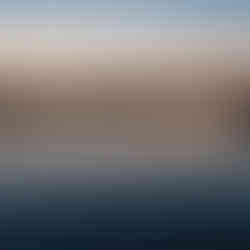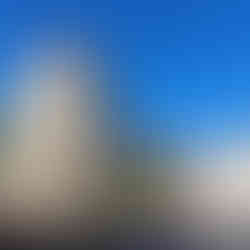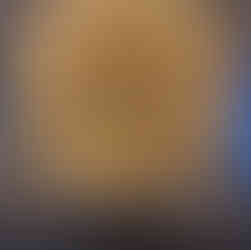Day 27: from MOISSAC to CAHORS, 80 km.
- magdakirsch
- Aug 21, 2023
- 5 min read
We woke up at 5 o'clock. Our bags hanging on the bikes are ready. And we had breakfast: Bruno had Bolognese lasagne and a croissant (an interesting combination), and I only had a croissant and a piece of cheese with it. Both with coffee and milk. Also, a banana. At 6:30 am, we set off from our B&B on our bikes and crossed the bridge over the Tarn river. We want to reach Cahors before the intense heat sets in, as it's going to be 40 degrees Celsius. On the bridge, we meet various pilgrims, including Lucie and two French friends. Like many solo travelers, they have found a few soul mates and reunite every morning after staying in different places. Lucie is from Prague and has a total of 2500 km to walk to Santiago, but she's up for the challenge. Her two friends have taken the wrong direction, but Lucie is guiding them back on the right path. Most pilgrims nowadays use Google Maps or some other application to avoid getting lost.
Leaving at dawn, Lucie and her friends
We closely follow the Via Podiensis route. Yesterday, this route often ran alongside the departmental road we were cycling on. There are narrow paths created at the edge of the fields. Where pilgrims cross the road, there are signs asking motorists to drive carefully and be mindful of pilgrims. There aren't many of them at the moment because of the heat. Most pilgrims set out (on foot or on bikes) in May and June and in September, and sometimes even in October.
We first cycle to Lauzerte, a beautiful medieval cité, a typical bastide with vaulted passages under the houses around the central square, about 25 km from Moissac.
Lauzerte
Yesterday, we were in Tarn et Garonne; today, we are entering the Lot department. The road to Lauzerte is gently undulating, but the last two kilometers are steep uphill. At the top of the hill are the remains of a castle, many half-timbered houses, the Saint Barthélémy church, and the lovely square bastide square. We arrive around 8 o'clock, and there's no sign of anyone. I visit the church, which has several beautiful statues and especially painted panels on the walls in a chapel at the back, something typical of the region. There are also some beautiful stained glass windows, including a colorful rose window.
Lauzerte: interior of the church, enjoying a cup of coffee with a Biscoff
When I leave the church, Bruno is enjoying an espresso. I have a café crème, and they give me a Lotus biscuit. I take a photo of it and send it to Litje and John, two of our dearest and most generous sponsors from the Rinus-Pini Fund. Even in a small village on the hills, Flemish/Belgian Lotus cookies are being enjoyed. The locals explicitly ask for them, adds the café owner. He also tells us that his inn is open almost 300 days a year, which means tourists come here almost year-round and... enjoy Lotus cookies.
Montcucq: the donjon, the church and the market
We ride downhill and are now on the Via Podiensis towards Montcuq, 16 km away. The village is also perched atop a hill and is known for its ancient medieval keep and its unfortunately closed Saint Hilaire church. It has an interesting octagonal tower standing on a square base. Since the church is closed, we take a stroll through the Sunday market. By a stroke of luck, we meet Veerle, one of the best friends of our dear daughter-in-law Véro and Frederik (our son), and the godmother of our dear grandson Jacob; they are all Rinus Pini supporters. We briefly greet the whole family and continue our journey.
Meeting with Veerle (godmother of our grandson Jacob) on the market of Montcucq
It's getting hotter and hotter, but we still want (or I want) to visit a few more churches. First, we go visit the church of Saint Pantaléon. The church is so integrated among the houses that you can find it by passing through a passage under the house to the courtyard, where the church is located. It has a distinctive and robust tower that, in my opinion, is pre-Romanesque, with many openings at the top. The church is small and has the feel of an oratory, a kind of prayer place. There, we meet Monique and Michel Wijngaardier, two French people, but his father was Flemish. That's evident from the name. She explains that he always wants to visit churches where miraculous healings have taken place. He tells us that Saint Pantaléon healed a child bitten by a snake.
The church of Saint Pantéléon, the passageway, Monique and Michel
Back on the bikes, we ride on to Labastide-Marnhac on the Via Podiensis to visit the old castle and the church, which unfortunately is also closed. We don't enjoy it as much anymore because it's too hot. We quickly eat and drink something in the shade, but even there, it's super hot, and we continue on to Cahors. Before leaving, we quickly call the owner of the flat Magda has rented for the night and she tells us that we check in at 13.45 p.m.
Fort van Labastide Marnhack en de Pont du diable in Cahors
We reach Cahors after 70 km at 12 o'clock. Cahors is located on and around a meander of the river Lot. It has many Roman remains and of course also a beautiful Romanesque-Gothic cathedral, St Etienne, built mainly between the 12th and 15th centuries. Typical are also the two domes and a late Gothic cloister. The most famous statue is the 14th-century Pont Valentré or the pont du diable. An impressive bridge as a defense for the city with several high towers: impressive. It is a cozy old town with many small streets and half-timbered houses. However, it is too hot to enjoy it.
Cahors: St. Etienne cathedral, dome and late-gothic cloister
When entering the town, we quickly do some shopping for tonight and tomorrow morning at a Carrefour that closes at 12:30 pm because it's Sunday. We're too early for the apartment, so we decide to visit the Pont Valentré, also known as the Pont du Diable (Devil's Bridge), now. We find a spot fully in the shade and decide to have a peaceful picnic there. Bruno devours another entire baguette smeared with a large pot of chicken rillettes. While he's eating, he engages in a lively discussion with a Canadian named Marco, who is undergoing training to heal people with hypnosis. The day before yesterday, it was a discussion with two Americans who were strong proponents of homeopathy as a remedy for all illnesses.
Cahors: Bruno discussing with , the garden of the cloister and interior of the cathedral
After this spirited discussion, we ride to the apartment, which is located in the center of Cahors. The owner lets us in immediately. We have two beds, which is fine since Bruno prefers to sleep alone. There's also a powerful fan, and for the bed on the mezzanine where I (opi) will sleep, there's even an air conditioning unit: hooray for this heat. We unpack. We sit in our underwear, because those cycling shorts are too tight around a man's sensitive parts. We have a glass of wine together and chat about our long morning.
Cahors: Bruno italking to members of the Compostela society, facade of the cathedral and one of the towers of the Pont du diable
In the late afternoon, we visit the cathedral to get our credentials stamped. The local Santiago society is there, and Michel, the president, is particularly helpful and interesting to listen to. Françoise helps us find stores that are open on Sunday. We enjoy the conversation and then head back to our apartment to enjoy a cozy meal of canard parmentier and cou de canard farci, or stuffed duck neck, with yes, foie gras... it's okay once in a while, as Bruno isn't usually a fan of foie gras. Meanwhile, Bruno is having a battle with the can in which the cou farci is sold, surrounded by duck fat. It ends with a victory for Bruno. Now we eat together and then go to bed early because tomorrow will be another hot day.
































































Comments